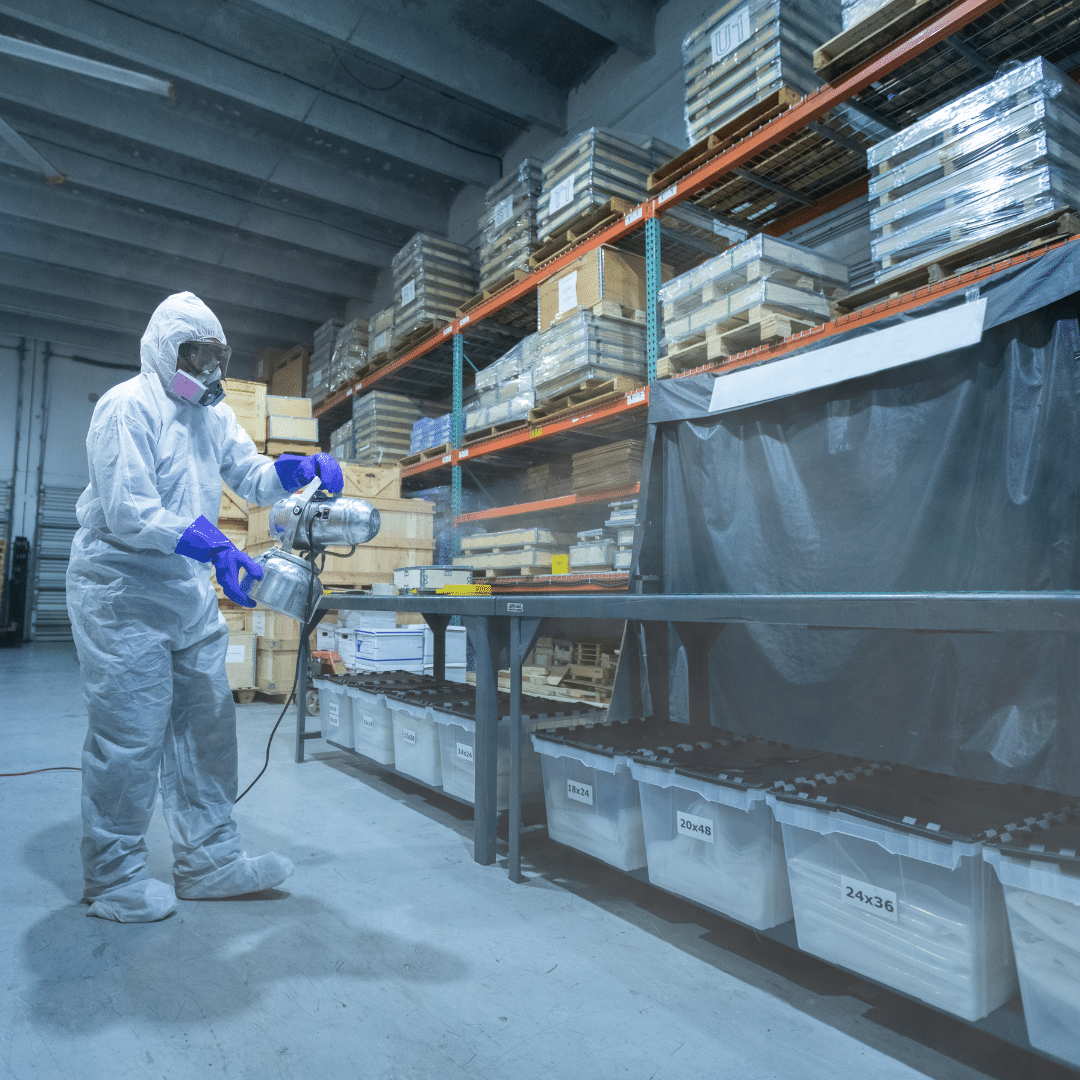In the fast-paced world of warehouses and distribution centers, maintaining a clean and safe environment is paramount to ensure the well-being of workers and the efficiency of operations. Poor sanitation and lax safety measures can lead to accidents, health hazards, and disruptions in productivity. To help you create a secure and hygienic workplace, here are the top four sanitation and warehouse safety tips.
- Implement a Robust Cleaning Schedule: One of the first steps towards a safe and sanitary warehouse is the establishment of a comprehensive cleaning schedule. Regularly clean and disinfect all surfaces, especially high-touch areas like doorknobs, conveyor belts, and shared equipment. Make sure cleaning supplies are readily available, and encourage employees to maintain cleanliness in their workspaces. Assign specific cleaning responsibilities to individuals or teams to ensure accountability. Investing time and resources in a thorough cleaning routine not only prevents the spread of germs but also contributes to a more organized and efficient work environment.
- Prioritize Proper Waste Management: Effective waste management is a critical aspect of maintaining sanitation in warehouses. Implement a waste disposal system that segregates different types of waste, such as recyclables, non-recyclables, and hazardous materials. Clearly label bins and provide training to employees on the proper disposal procedures. Regularly inspect waste storage areas to identify and address any potential issues promptly. By prioritizing proper waste management, you not only contribute to a cleaner environment but also reduce the risk of accidents and health hazards associated with improper disposal of materials.
- Promote Personal Protective Equipment (PPE) Usage: Warehouse safety goes hand in hand with the proper use of personal protective equipment (PPE). Equip your workforce with the necessary gear, such as helmets, gloves, safety goggles, and reflective vests, depending on the nature of the work. Conduct regular training sessions on the correct usage and maintenance of PPE. Additionally, enforce a strict policy regarding PPE compliance. By prioritizing the use of protective equipment, you create a safer work environment, reducing the likelihood of injuries and ensuring the well-being of your workforce.
- Invest in Employee Training Programs: Knowledge is a powerful tool in maintaining warehouse safety and sanitation. Implement regular training programs to educate employees about the importance of cleanliness, safety protocols, and emergency procedures. Ensure that all employees are familiar with the location and proper usage of safety equipment, fire extinguishers, and emergency exits. Encourage open communication, so employees feel comfortable reporting potential hazards or suggesting improvements to existing safety measures. By investing in ongoing training, you empower your workforce to actively contribute to maintaining a secure and hygienic warehouse environment.
In conclusion, prioritizing sanitation and safety in the warehouse is not only a legal requirement but a fundamental responsibility to the well-being of your workforce. Implementing a robust cleaning schedule, effective waste management, promoting PPE usage, and investing in employee training are essential steps towards creating a secure and hygienic workplace. By embracing these practices, you not only mitigate potential risks but also foster a culture of safety that contributes to the overall success and longevity of your warehouse operations.

